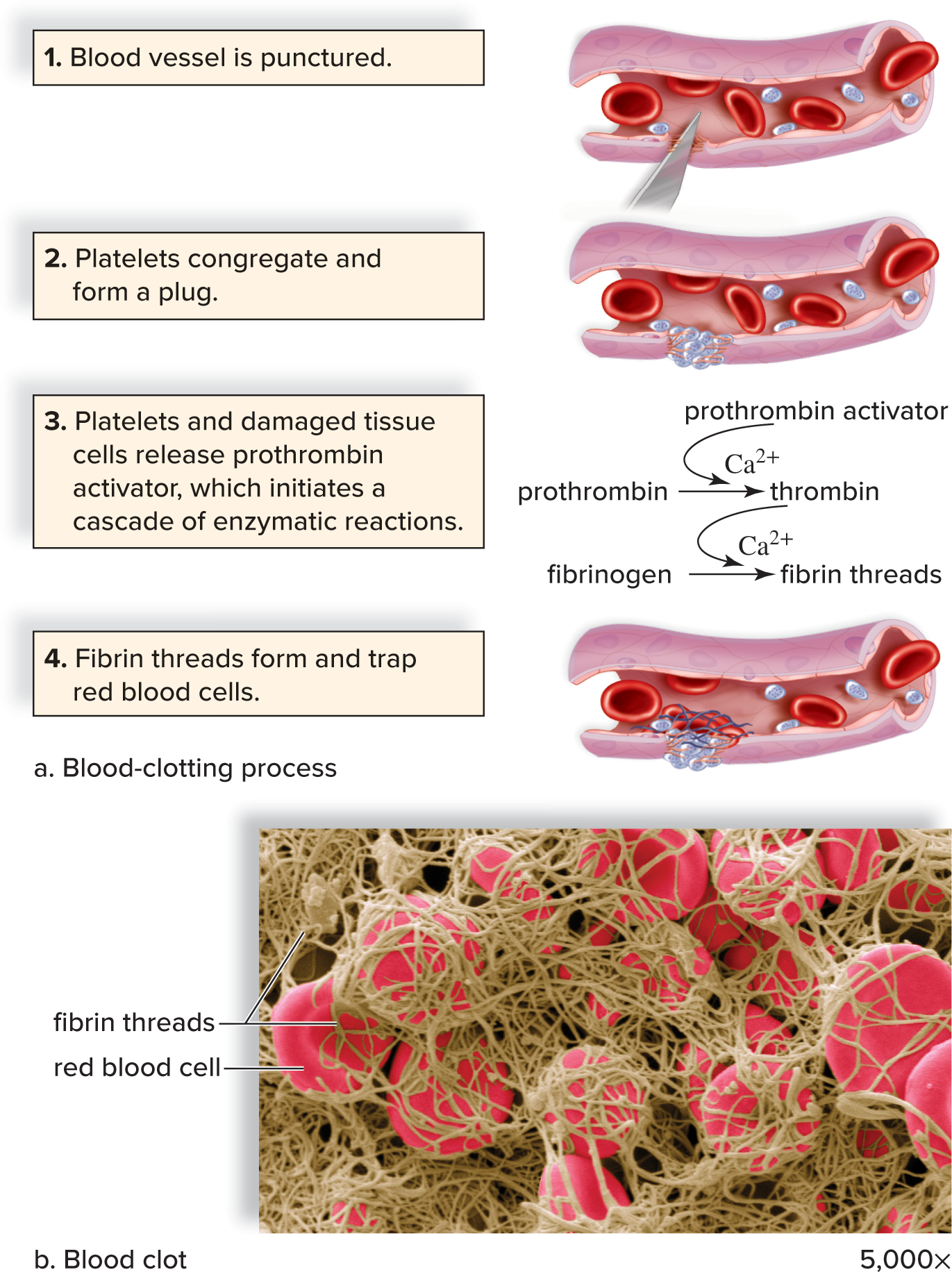Chapter 9: Blood (Human Bio)
1/11
There's no tags or description
Looks like no tags are added yet.
Name | Mastery | Learn | Test | Matching | Spaced |
|---|
No study sessions yet.
12 Terms
List the functions of blood in the human body.
Exchanges nutrients and wastes with tissues by capillary exchange.
Defends the body against pathogen invasion and blood loss.
Regulates body temperature, water salt balance, and pH balance.
List the formed elements of the blood and provide the function of each.
Red Blood Cells: Specialized in oxygen transport.
White Blood Cells: Fight infection and are part of the immune system.
Platelets: Help blood-clotting and coagulation.
Describe the composition of plasma.
91% water, 7% proteins, and 2% other solutes.
Explain the transport of oxygen and carbon dioxide by red blood cells.
Blood contains hemoglobin.
Heme attracts oxygen from the lungs and disperses it into the tissues.
Globin attaches to the hydrogen ion from HCO3- reaction from carbon dioxide. It’s released in the breath.
Summarize the role of erythropoietin in red blood cell production.
Erythropoietin is a hormone that stimulates stem cells in bone marrow to produce more RBCs.
Explain the function of white blood cells in the body.
White blood cells fight infections by doing the following:
Surrounding and engulfing pathogens.
Producing antibodies which surround and engulf antigens.
Distinguish between types of leukocytes.
Granular Leukocytes: White blood cell with prominent granules in the cytoplasm.
Agranular Leukocytes: White blood cell that does not contain distinctive granules.
Explain how blood clotting relates to homeostasis.
It helps by ensuring that plasma and formed elements remain in blood vessels.
List the steps in formation of a blood clot.
Blood vessel is punctured.
Platelets congregate and form a plug.
Platelets and damaged tissue cells release prothrombin activator, which initiates a cascade of enzymatic reactions.
Fibrin threads form and trap red blood cells.

Explain blood type determination.
Blood type is determined by what kind of antigen your blood carries. A blood sees B blood as foreign due to the type of antigen they carry and vice versa. O blood has no antigens.
Predict compatibility of blood types.
If someone has anti-B antibodies (type A blood) and is given type B blood, agglutination occurs. If given type A blood, no agglutination occurs.
Describe disorders associated with blood.
Jaundice: When bilirubin is unable to leave via the feces and accumulates in the skin and tissues.
Anemia: Inefficient oxygen transport by the blood due to a shortage of hemoglobin.
Leukemia: Cancer of the blood-forming tissues leading to the overpopulation of abnormal white blood cells.